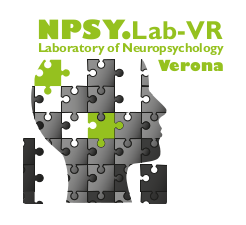Also for this year the CAOs 2014 will be held in Rovereto (Trento, Italy). It’ll last between the 8th and the 11th of May, the organiser are Alfonso Caramazza, Melvyn Goodale, Brad Mahon, Alex Martin, and Marius Peelen. Invited speakers: Irving Biederman, University of Southern…
Categoria: Neuroscience
Scientific Conference – Joint meeting of the FESN (Federation of European Societies of Neuropsychology) and the GNP (German Society of Neuropsychology) from September 12-14, 2013 in Berlin, Germany
The FENS meetings are the most important conferences concerning Neuropsychology in Europe. This year one of the major topics of lectures and symposia will be the integration of experimental approaches and clinical application in Neuropsychology. The director of the NPSY-Lab.VR,…
Summer school – The Visceral Mind: A hands-on course in the neuroanatomy of cognition
The NPSY-Lab.VR will be present at the summer school “The Visceral Mind”, a summer school concerning neuroanatomy, functional neuroanatomy, DTI, TMS and genetics. Michele Scandola was selected to participate to this summer school, with a strict selection of 40 candidates…
Apply to CoSAN PhD!
CoSAN PhD is an International and European PhD program in Cognitive, Social and Affective Neurosciences. This 3-years long PhD program is aimed to study, within the embodied cognition theoretical framework, the effects and the neural correlates of cognitive, social and affective…
“Avvio alla ricerca” grant
The project “L’integrazione multisensoriale in uno studio di percezione della verticale visiva in cervelli esperti: studi comportamentali e di Stimolazione Magnetica Transcranica (TMS). Il ruolo di TPJ nella percezione della verticale visiva soggettiva” presented by Scandola M., Fiori F., Porciello G.…
Summer school – Embodied Inter-subjectivity : the 1st person and the 2nd person perspective
The NPSY-Lab.VR will be present at the Aegina Summer School about embodiment. This Summer School is built upon the success of a previous summer school on the “The Sense of Body” that was organized in Italy in 2008 (please see…
Cognitive stimulation in a-MCI: an experimental study.
Authors Moro V, Condoleo MT, Sala F, Pernigo S, Moretto G, Gambina G. Abstract Nowadays, preventing the effects of mental decline is an international priority, but there is little research into cognitive training in mild cognitive impairment (MCI). We present the results of a program aimed at teaching memory…
After the Brain Awareness Week 2013
The NPSY-Lab.VR intervention at the BAW 2013 held in Rome was a success and an incentive to continue to work in this direction, with passion and commitment.
Brain Awareness Week 2013
Brain Awareness Week (BAW) is the global campaign to increase public awareness of the progress and benefits of brain research, founded by the Dana Foundation. The NPSY-Lab.VR will partecipate at the BAW 2013 in Rome, organized by the prof. Aglioti’s SCNLab, with…
Scientific Conference – “La complessità in riabilitazione”
Scientific conference organized by SIMFER Veneto, “Sacro Cuore – Don Calabria” Hospital and University of Verona with the purpose to discuss the complexity of rehabilitation, starting from the rehabilitiation of visual perception to motor rehabilitation. Our group will be present…
